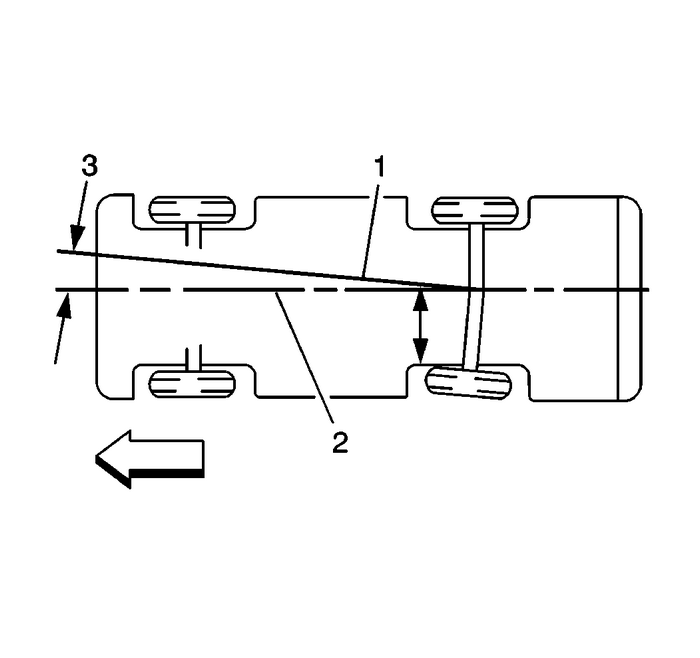Chevrolet Equinox Service Manual: Thrust Angles Description Wheels

The front wheels aim or steer the vehicle. The rear wheelscontrol tracking. This tracking action relates to the thrustangle-(3). The thrust angle is the path that the rearwheels take. Ideally, the thrust angle is geometrically alignedwith the body centerline-(2).
In the illustration, toe-in is shown on the left rear wheel,moving the thrust line-(1) off center. The resultingdeviation from the centerline is the thrust angle.
If the thrust angle is not set properly the vehicle may“dog track”, the steering wheel may not becentered or it could be perceived as a bent axle. Thrust angle canbe checked during a wheel alignment.
Positive thrust angle means the thrust line is pointing tothe right hand side (RHS) of the vehicle.
Negative thrust angle means the thrust line is pointing tothe left hand side (LHS) of the vehicle.
If the thrust angle is out of specification, moving the axleto body relationship will change the thrust angle reading.
If the vehicle is out in the Positive (+) direction-movingthe RHS forward and/or LHS rearward will move the thrust angletowards zero degrees.
If the vehicle is out in the Negative (−)direction-moving the RHS rearward and/or LHS forward will move thethrust angle towards zero degrees.
 Front Caster Adjustment Wheels
Front Caster Adjustment Wheels
The front caster is not adjustable. If the front caster angleis not within specifications, inspect for suspension supportmisalignment or front suspension damage. Refer toWheel Alignment Specifications ...
 Tread Wear Indicators Description Wheels
Tread Wear Indicators Description Wheels
The original equipment tires have tread wear indicators thatshow when you should replace the tires.The location of these indicators are at 60-degreeintervals around the outer diameter of the tire. The ...
Other materials:
Piston and Connecting Rod Assemble Engine Block Cylinder Block Piston Assembly
Special ToolsEN-46745Piston Pin Retainer Remover andInstallerFor equivalent regional tools, refer toSpecial Tools.Note:Install the piston onto the connecting rod with the arrow ontop of the piston toward the front oriented toward the front of theengine.Note:The cast boss-(1) can be in either or both ...
